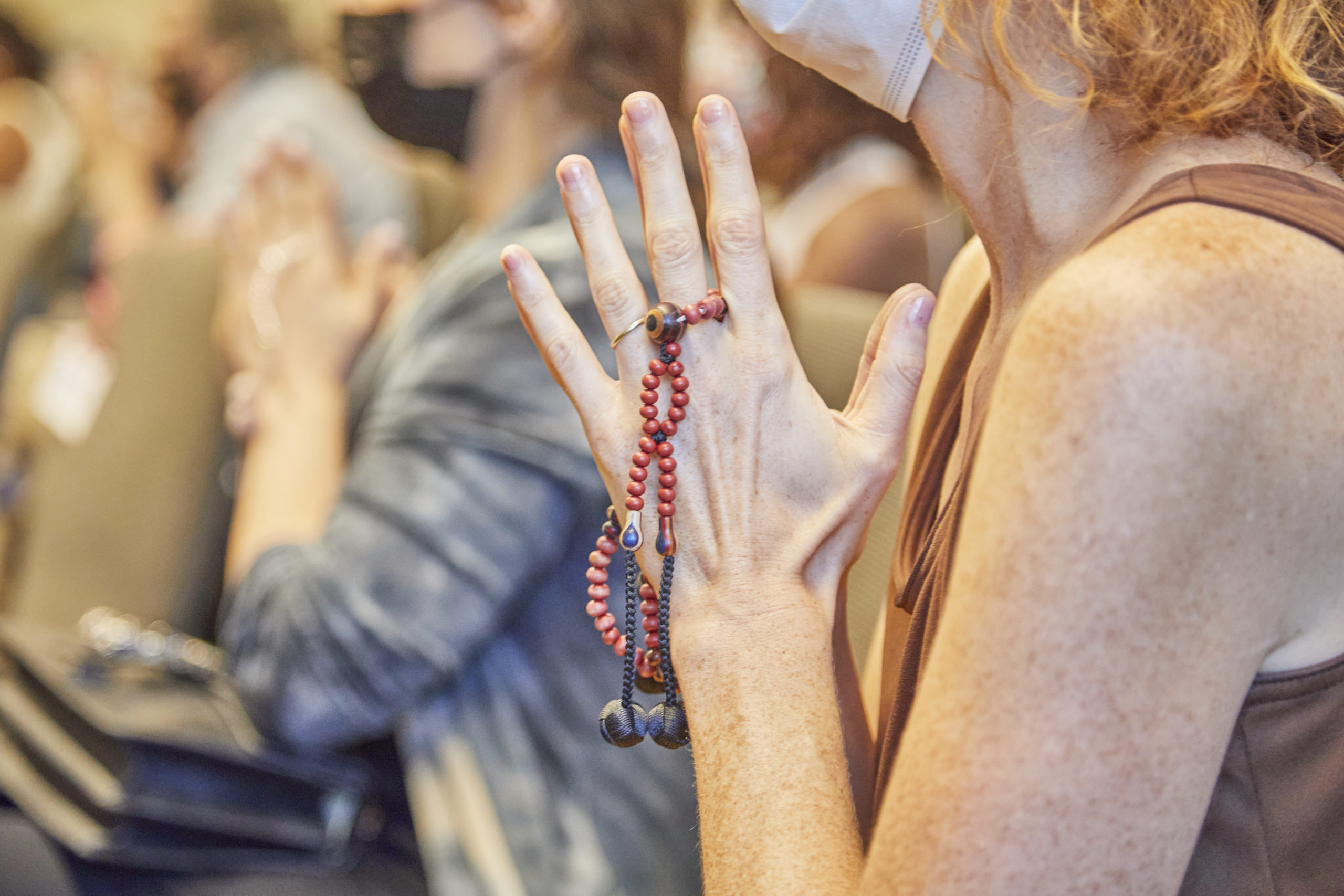We all experience various situations each day. At times, we respond in ways that highlight our wonderful character, other times, not so much: We might do or say something we regret or that causes us to suffer. We could spend hours caring for a friend in need but then that same day get into a heated argument with our partner and say mean, hurtful words.
Despite such shifts in how we deal with things, each of us is an infinitely precious and noble Buddha who possesses limitless reserves of courage, wisdom and compassion.
Having conviction in this is difficult, however. Nichiren Daishonin says: “We ordinary people can see neither our own eyelashes, which are so close, nor the heavens in the distance. Likewise, we do not see that the Buddha exists in our own hearts.”[1]
So let’s learn from the concept of the mutual possession of the Ten Worlds, which offers insights into how we can not only believe in our Buddhahood but bring it forth anytime, anywhere.
The Meaning of “Mutual Possession”
The concept of the Ten Worlds teaches that we can experience at any moment any of the 10 states of life that are potential within us, ranging from the lowest world of hell to the highest world of Buddhahood.[2] We manifest any one of these Ten Worlds at each given moment, the other nine remaining latent.
This process is not linear or fixed. We jump around from one state of life to another throughout the day, moment to moment, based on various internal and external conditions.
Here, “mutual possession” of these 10 states of life means that each world contains the potential for all ten. The point? Each state of life exists in the world of Buddhahood, and Buddhahood exists within each world.
This means that Buddhas remain ordinary people and will still experience various life states. It also means that we can tap our inner Buddhahood, no matter what state of life we’re in.
So, how do we do this?
We can instantly access Buddhahood by chanting Nam-myoho-renge-kyo. Through chanting, we elevate our life condition and bring forth our Buddha nature. Rather than being controlled by our baser instincts, we can muster the courage to face anything, bring forth the greatest wisdom and compassion, and create utmost value right where we are.
Moreover, because we’ve accumulated countless causes from past lifetimes, we default to one of the Ten Worlds. For instance, we might tend to respond with anger in certain situations (asuras) or feel that we never have enough of whatever it is we want (hungry spirits).
But through our practice of Buddhism, we can make Buddhahood our default, our basic life tendency. This means that, even though we still have worries (other nine worlds), our lives operate based on ever-increasing joy, wisdom, compassion and courage (Buddhahood).
We can bring forth our Buddhahood by chanting and doing gongyo every day, studying Buddhism, sharing it with others and making the happiness of ourselves and others the motivation for everything we do.
The Mindset of a Buddha: Each Challenge Is an Opportunity
Describing a Buddha as “one who embodies the mutual possession of the Ten Worlds,” Ikeda Sensei says:
The world of Buddhahood can also be described as a state of life where one willingly takes on even hellish suffering. This is the world of Hell contained in the world of Buddhahood. It is characterized by empathy and hardships deliberately taken on for the happiness and welfare of others, and arises from a sense of responsibility and compassion. Courageously taking on problems and sufferings for the sake of others strengthens the world of Buddhahood in our lives.[3]
Based on the mutual possession of the Ten Worlds, everything we go through becomes raw material for fortifying our Buddhahood, and for encouraging and awakening others to their inherent power. By changing our default through continued Buddhist practice, we can come to use each experience, negative or positive, to generate even more happiness.
In the midst of an argument, a devastating loss or a debilitating illness, we may not always see where the happiness will come from. But continually striving to live in this way enables us to establish the unshakable life state of Buddhahood.
Will we see our challenges as setbacks and causes for suffering? Or as opportunities to strengthen and enrich our lives? Knowing that our Buddhahood is always accessible or right around the corner helps us live with complete peace of mind, using everything to advance our happiness.
And as we strive each day to elevate our basic life tendencies and urge others to do the same, the state of our society will likewise transform and move toward Buddhahood.
—Prepared by the SGI-USA Study Department
References
- “New Year’s Gosho,” The Writings of Nichiren Daishonin, vol. 1, p. 1137. ↩︎
- Ten Worlds: The Ten Worlds represent ten states of life. They are the worlds of 1) hell, 2) hungry spirits, 3) animals, 4) asuras, 5) human beings, 6) heavenly beings, 7) voice-hearers, 8) cause-awakened ones, 9) bodhisattvas and 10) buddhas. ↩︎
- The Wisdom for Creating Happiness and Peace, part 1, pp. 30–31. ↩︎
You are reading {{ meterCount }} of {{ meterMax }} free premium articles

